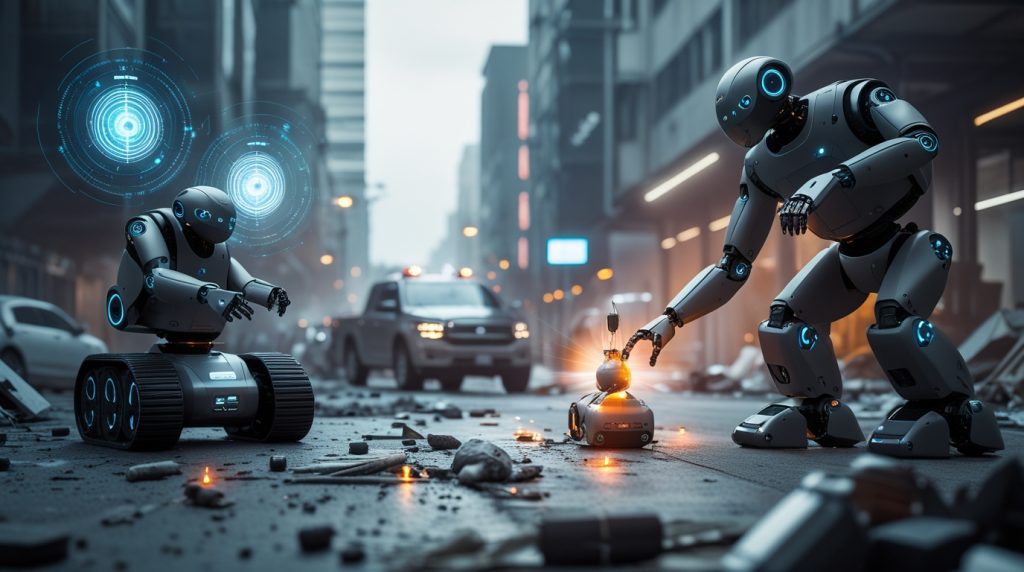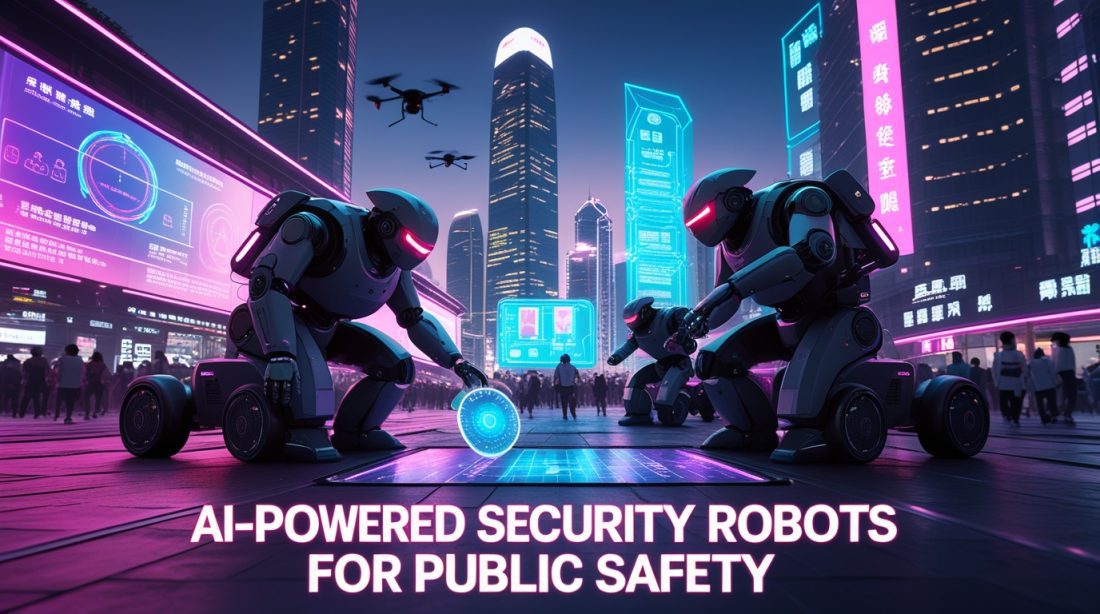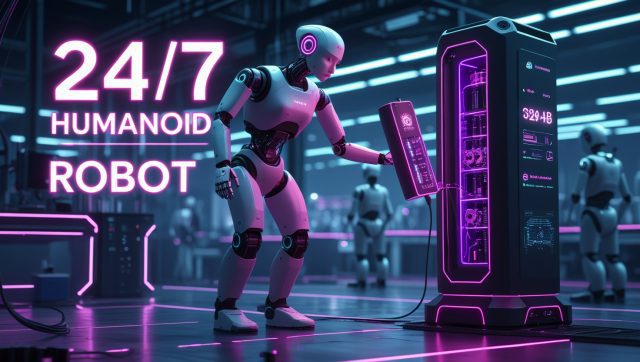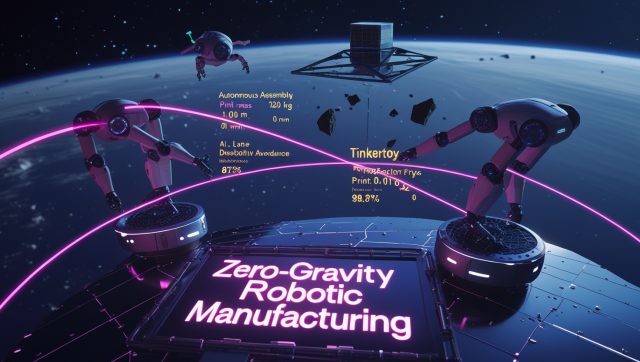Fast Facts
Hong Kong’s bomb disposal squad has deployed mainland China-made AI-powered security robots for public safety to enhance protection during the 2025 National Games. These robots represent a practical application of industrial AI in public security, capable of autonomously identifying threats, navigating complex environments, and defusing explosives with minimal human intervention. This deployment reflects broader trends in the global EOD robotics market, which is growing at 15.1% annually as defense and security agencies increasingly adopt autonomous systems for high-risk operations.
“AI-driven autonomy enables EOD robots to perform increasingly complex tasks with minimal human intervention, resulting in a significant reduction in operator risk and potential casualties.” – Jon Hall, explosives technology expert.
When Hong Kong secured its role as co-host of the 15th National Games, security planners faced an unprecedented challenge: protecting multiple high-profile venues across the city, including the new Kai Tak Sports Park and Central Harbourfront, against potential explosive threats. Their solution arrived in the form of AI-powered security robots from Mainland China—advanced systems that represent far more than just incremental improvements in bomb disposal technology.
This deployment comes at a pivotal moment in global security technology. The explosive ordnance disposal (EOD) robots’ market is experiencing massive growth, projected to expand from USD 1.8 billion in 2024 to USD 7.3 billion by 2034, with a remarkable 15.1% compound annual growth rate. Hong Kong’s adoption of these systems positions the city at the forefront of a global shift toward AI-enhanced public safety.
Why Hong Kong turned to AI robotics for enhanced security
The 2025 National Games represent Hong Kong’s first time co-hosting China’s premier sporting event, creating both an honor and a security challenge of extraordinary scale . With eight competitions to host, including rugby sevens, beach volleyball, and triathlons at high-profile locations like Victoria Harbour, traditional security measures alone proved insufficient.
The specific nature of sporting events presents unique vulnerabilities—crowded spaces, multiple entry points, and the psychological impact of any security incident. According to the Global Terrorism Index 2025, the number of countries experiencing at least one terrorist incident has increased from 58 to 66 in 2024, creating a more complex global threat environment.
Hong Kong’s bomb disposal squad responded by deploying mainland China-made robots to step up security for the National Games. This decision reflects a strategic shift from reactive bomb response to proactive threat prevention enabled by artificial intelligence.
How AI-powered robots transform bomb disposal operations

Autonomous threat detection and identification
Modern AI-powered security robots integrate multiple sensor technologies—including thermal imaging, ground-penetrating radar, and chemical sensors—to detect potential threats that might escape human observation. The AI systems analyze data from these sensors in real-time, classifying objects and identifying explosive materials with increasing accuracy.
The UK’s Ministry of Defence recently completed trials with similar systems, demonstrating robots’ ability to remotely classify and identify threats using advanced sensors . This capability allows security personnel to assess potential dangers from a safe distance, creating an essential buffer between bomb disposal experts and explosive devices.
Navigating complex urban environments
Unlike traditional EOD robots limited to simple terrains, the latest AI-powered systems demonstrate remarkable mobility. Today’s most advanced robots employ hybrid mobility systems, combining tracked, wheeled, and even legged locomotion to navigate stairs, rubble, and other challenging obstacles .
Table: EOD Robot Mobility Systems and Their Applications
| Mobility Type | Market Share (2024) | Growth Projection | Primary Use Cases |
|---|---|---|---|
| Tracked Robots | 46.1% | Steady growth | Uneven terrain, debris-filled environments |
| Wheeled Robots | Significant portion | Moderate growth | Urban environments, flat surfaces |
| Legged Robots | Emerging segment | 24% CAGR (2025-2034) | Stairs, complex obstacles, tight spaces |
| Hybrid Systems | Growing segment | Rapid adoption | Multiple environment types |
Autonomous disposal capabilities
The most significant advancement lies in what these robots can do once they locate a threat. Recent demonstrations have shown robotic systems successfully firing disruptors at IEDs to render them safe—a task previously requiring human operators to work in close proximity to explosive devices.
This capability stems from AI systems that can perform delicate and precision movements reliably, reducing the burden on human operators while improving operational effectiveness. The technology represents a fundamental shift from remote-controlled tools to truly autonomous disposal systems.
The industrial AI transformation behind security robotics
From manual control to autonomous decision-making
The EOD robotics market is undergoing a fundamental transition. While remote-controlled systems dominated the market in 2024 with USD 1.14 billion in value, autonomous and semi-autonomous robots represent the fastest-growing segment, projected to expand at a 20.1% CAGR.
This shift mirrors broader trends in industrial AI—the movement from human-controlled systems to truly autonomous operations that reduce cognitive load, accelerate response times, and maintain effectiveness even in communication-compromised environments.
China’s growing dominance in security robotics
Hong Kong’s deployment of mainland China-made robots reflects broader technological development trends. The China EOD robots’ market is expected to grow at 18.1% annually, fueled by increased defense spending and focused domestic production of robotics.
This growth extends beyond security applications. Just recently at the World Humanoid Robot Games in Beijing, Chinese robotics companies demonstrated remarkable capabilities, with portfolio companies of Shoucheng Holdings winning 37 medals across 26 disciplines. The same technological advances that power these competition robots—advanced mobility, precise manipulation, and autonomous decision-making—now protect public events through security robotics.
The data advantage: Continuous improvement through machine learning
Unlike traditional systems with fixed capabilities, AI-powered security robots grow more effective over time. Machine learning models are continually refined with new operational data, leading to consistent improvements in accuracy and tactical decision-making.
This continuous learning process creates a compounding advantage—every mission, every inspection, and every analysis contributes to building more capable systems. For security agencies, this means their robotic assets become more valuable with each deployment, rather than simply depreciating like conventional equipment.
Beyond the National Games: The future of AI in security

The deployment of AI-powered security robots in Hong Kong represents more than a single-event security measure. It signals a fundamental shift in how governments approach public safety for major events. As Maria Eagle, UK Minister for Defence Procurement and Industry, noted: “This advanced technology demonstrates our commitment to protecting the military personnel who keep our nation safe, at home and abroad”.
The technology demonstrated during the National Games has broader applications for urban security, critical infrastructure protection, and disaster response. As these systems prove their value in high-profile settings, we can expect accelerated adoption across multiple security domains.
Industrial AI isn’t just creating incremental improvements in security—it’s fundamentally redefining the relationship between human operators and hazardous environments. The AI-powered security robots protecting Hong Kong’s National Games today may well become standard equipment for urban police departments and security agencies tomorrow, permanently altering how societies manage risk in public spaces.
FAQ
How do AI-powered robots improve bomb disposal safety?
AI-powered robots enhance safety by allowing bomb disposal technicians to work from secure distances. They can autonomously navigate hazardous areas, identify threats using advanced sensors, and even defuse explosives without exposing human operators to danger.
What types of AI capabilities do these security robots have?
These robots incorporate multiple AI technologies including autonomous navigation, real-time threat analysis using sensor fusion, object classification through machine learning, and the ability to perform complex physical tasks like opening doors and climbing stairs with minimal human intervention.
Why did Hong Kong choose mainland China-made robots for the National Games?
While the search results confirm Hong Kong deployed mainland China-made robots for Games security , specific selection factors aren’t detailed. Generally, such decisions consider factors like technical capabilities, interoperability with existing systems, supply chain reliability, and previous demonstration of effectiveness in similar operational environments.
Are autonomous robots replacing human bomb disposal experts?
No, the focus is on collaboration rather than replacement. As one analysis notes: “The future of EOD isn’t about robots replacing humans; it’s about intelligent collaboration”. AI systems handle dangerous physical tasks while humans provide strategic oversight, making the combined team more effective than either could be alone.
How does the cost of AI-powered security robots compare to traditional systems?
While specific pricing isn’t provided in the search results, the market analysis indicates that high acquisition costs remain a challenge. However, autonomous systems may offer better long-term value through reduced personnel risk, multi-mission capability, and continuous improvement through software updates rather than hardware replacement.
Stay Ahead in Industrial AI
Want to understand how AI-powered robotics will transform your industry? Subscribe to our newsletter for expert analysis on industrial AI applications, security technology trends, and the business impact of autonomous systems.
Further Reading
- Discover how Three Lives of a Robot explores the evolution of industrial AI agents from experimentation to mission-critical roles—mirroring the shift in bomb disposal robotics.
- Learn how AI Downtime Prediction turns predictive models into monetized risk reduction, a key benefit of autonomous threat detection.
- See how The Unitree G1 Security Crisis reveals the dual-use nature of security robotics and the geopolitical implications of AI deployment.
- Explore Why Domain Randomization in Industrial Robotics is critical for training robots to operate in unpredictable environments like urban bomb disposal zones.
- Understand how Industrial AI Safety Compliance in Robotics is shaping standards for autonomous systems in high-risk public applications.



